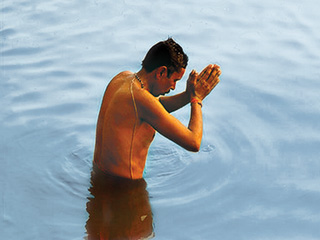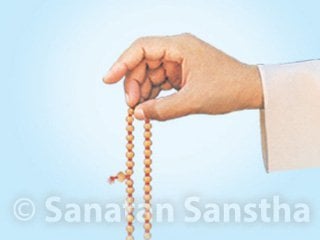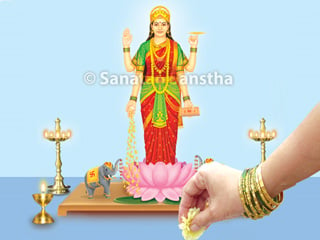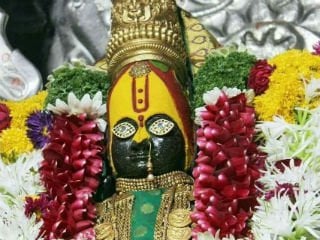Contents [hide]

The river Ganga originates in the Himalayas at Gangotri and culminates in Bay of Bengal through its tributaries. It stretches along 2,510 kilometres. It is the holiest among all the seven Holy rivers in Bharat. One who elevates (the bathing embodied soul) to the state of the Deity is the Ganga. One to whom those desirous of Liberation turn to is the Ganga (says the Shabdakalpadrum).
1. Some names of Ganga
A. Vishnupadi
Deity Brahma washed the feet of Shrivishnu with the water from His Kamandalu (Water pot). It was from this water that the Ganga originated and thus came to be known as Vishnupadi (Pad means feet).
B. Tripathaga
She is called so because She flows through all the three regions – heaven, earth and hell (Tri means three and patha means path).
C. Bhagirathi
It was because of austerities undertaken by Bhagirath that this river descended onto earth. Hence, the river is named after him. According to the Shaiva sect, Bhagirath pleased Deity Shiva with his austerities. To prevent the earth from breaking into two due to the force of the current of the Ganga flowing from heaven, Deity Shiva took Ganga upon His head. From there, She made a gradual descent onto the earth, at Gangotri in Bharat.
D. Janhavi
While flowing down the Himalayas, the Ganga swept away Sage Janhu’s site for performing sacrificial fires. This enraged the Sage who swallowed Her stream in its entirety. Then Bhagirath prayed to Sage Janhu. Consequently, He released the waters of the Ganga through His ear. That is how Ganga came to be known as Janhavi.
2. Unique characteristics and importance
A. Holy
It is the holiest among all the seven Holy rivers in Bharat. Should any water in the world be compared to the water of the Ganga, those who can perceive the subtle dimension will realise that the latter is holier.
B. The one bringing about spiritual evolution
Since the Ganga causes spiritual upliftment of the downtrodden, it is used to cleanses ins. To attain better afterlife, water from the Ganga is poured into the mouth of an individual on his deathbed. It is due to this that water from the Ganga is preserved in every household.
C. Ability to destroy germs
Dr E Hanbury Hankin’s research of the 19th century is associated with the disinfecting / antiviral power of Ganga’s water. Hankin (1896) reported that cholera microbes did not survive for long in the Ganga waters. He conducted his studies on the Ganga at Varanasi, where he collected samples below the cholera-infected dead bodies that had been thrown into the Ganga, and found that the cholera microbes died within a few hours of their contact with the Ganga water.
It has been proved scientifically that like cholera, the germs of plague, malaria etc. also cannot survive in the water of Ganga. It has also been proved that by drinking Ganga water everyday, resistance against diseases increases and illnesses such a sin digestion, long-standing fever, diarrhoea, dysentery, asthma etc. are gradually cured. Ganga water has the potential to heal a wound. Even as per Ayurveda, the Ganga water has many outstanding medicinal values.
D. association
River Ganga is associated with knowledge, while river Yamuna with devotion.

 Why do we chant Name of Kuladevi instead of Kuladev?
Why do we chant Name of Kuladevi instead of Kuladev? What are the different types of Shaktis?
What are the different types of Shaktis? Shri Lakshmi – Deity of opulence
Shri Lakshmi – Deity of opulence Ritualistic worship of Devis
Ritualistic worship of Devis Why is Adimaya referred to as kumari ?
Why is Adimaya referred to as kumari ?